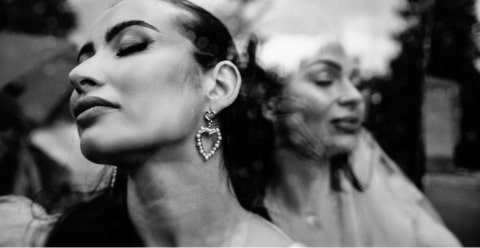Cover photo by wavebreakmedia
AI photography editing involves utilizing artificial intelligence to edit and modify photos. Traditional editing, on the other hand, includes manually adjusting and editing pictures, and therefore, requires a deep understanding of the software tools you’ll be using to edit those photos. With AI’s automation and ability to streamline editing workflows, it’s worth exploring how AI and accessibility can go hand-in-hand.
In this article, Michaela Luyt, an experienced commercial and lifestyle photographer shares her thoughts and insights on how AI might improve inclusivity in photography editing and photography business as a whole.
How Does AI Make Art More Accessible?
AI can help with accessibility in the following ways:
- Bridges Divide Between Technical Abilities: By automating processes, AI enables a wider range of individuals, regardless of their technical abilities, to explore editing. “For example, I have five years of experience. Someone with only one year of experience could definitely benefit more from it, as it makes the process easier for them,” says Michaela. It’s an empowering skill set to learn, in cohesion with general editing skills.
- Condenses Technical Tasks: AI tools can assist photographers with disabilities by facilitating editing tasks, such as retouching. These tools can overcome physical limitations and allow photographers to focus on expressing their artistic vision. AI can simplify the process, making it easier by compressing multiple technical tasks into one or two, resulting in the same artistic outcome.
“AI is a bonus instead of detracting from editing itself,” explains Michaela. It streamlines and enhances editing, making it good for workflow processes.”
» Discover more ways AI photography editing can optimize your workflow
Diversity and Inclusion in Art With AI
With AI’s functionalities that can streamline editing and break technical boundaries, there are other factors to consider when editing with AI in order to leverage its full inclusivity potential:
Creating Photos For More Diverse Audiences
I think the biggest thing about photography is that it’s about your personal artistic vision. And getting diverse groups of people involved and ensuring that their needs are met improves inclusivity and accessibility. With AI algorithms that analyze trends and preferences across various demographics, photographers can tailor their work and artistic vision to meet the preferences of various individuals and groups. This helps produce content that appeals to a wider audience.
AI technology can continuously improve its inclusivity and accessibility features to cater to the evolving needs of both creators and consumers by getting them involved in the process of development, and then regularly providing feedback loops so they can get what they want out of the editing process.
Mitigating Biases in AI to Ensure Fairer Representation
Biases can inadvertently manifest in AI-powered editing tools due to the biases presented in training data and the perspectives of developers. “I’m reading The Creativity Code, which points out the end goal of AI being to get AI to a creative level where it’s producing what humans are producing—that creativity,” shares Michaela.
When you have a developer, their goal is essentially going to be very different from an artist. It’s getting past those biases and data sets and being able to get the creative label that you want with photography editing.
To ensure a fair representation, steps can be taken to mitigate these biases:
- Implement transparency in algorithmic decision-making in AI development teams and foster the steps taken. This will include using diverse training data.
- Get more creative minds involved to make sure that the photography editing still has creative elements in the AI.
» Learn how AI tools can respect and enhance the photographer’s vision
AI and Intellectual Property
Since AI in art tends to require user input to prompt outputs, Michaela shares that those inputs are unique to the user, and therefore, can be considered intellectual property.
“Words are essentially art, and you as a human had to construct that prompt in order to get the piece of art. Due to the fact that it’s your words being used to design that piece of art or write that article or book, I feel like it’s your intellectual property. Where the line is going to get obscure is when AI becomes more advanced and has more of an input,” says Michaela.
Make Photo Editing For All With AI
“AI enables individuals from all walks of life to engage with photography and other art forms where they otherwise wouldn’t have had that opportunity. And it gives them the ability to construct their words into an art form, especially for people with a more logical mindset,” explains Michaela. Therefore, it reduces technical barriers and encourages more individuals to participate in the art scene and creativity sphere. So, utilizing tools like Imagen’s AI-led editing software is a step toward a more accessible photo editing world.
____
 Michaela Luyt is a digital marketing specialist and an experienced photographer with over 5 years of expertise, capturing moments from commercial to lifestyle settings. She has a creative eye, a passion for storytelling, and an ability to evoke emotions through the lens. Her freelance photography and marketing businesses focus on providing tailored solutions for small companies and agencies.
Michaela Luyt is a digital marketing specialist and an experienced photographer with over 5 years of expertise, capturing moments from commercial to lifestyle settings. She has a creative eye, a passion for storytelling, and an ability to evoke emotions through the lens. Her freelance photography and marketing businesses focus on providing tailored solutions for small companies and agencies.
